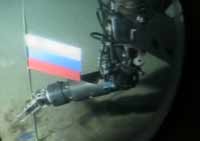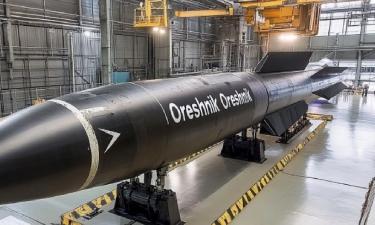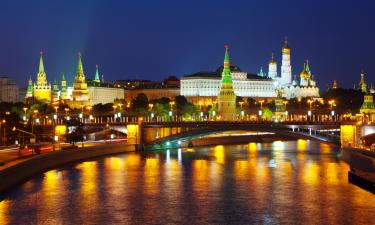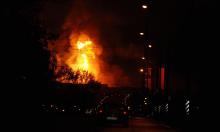Arctic region likely to become the center of World War III
Global warming may take the struggle for the division of the Arctic region to the boiling point. The resources of the region will soon become available for mining. About 20-25 percent of world’s crude and natural gas reserves are located on the Arctic shelf, experts say. In addition, Greenland gradually comes out of its ice anabiosis. It is not ruled out that this land will become independent on Denmark to turn into a large oil-mining country.

An international conference with the participation of ministers of five Arctic states – the USA, Russia, Norway, Denmark and Canada, took place last week in the town of Ilulissat, Greenland. The conference was held to discuss the rules of dividing the Arctic. The UN Convention on the Law of the Sea defines the rights and responsibilities of nations in their use of world’s oceans. However, the Arctic region, which does not belong to any country, is obviously a tidbit for many. Some experts even say that the next world war will start in the Arctic.
The participants of the conference attempted to pretend that everything is quiet in the Arctic region. The joint declaration of the ministers, which was approved following the results of the meeting, said that the countries did not see a need in elaborating the new international regime to administer the Arctic Ocean. The officials only promised to accordingly observe the development of the situation in the Arctic Ocean.
Russia’s Minister for Foreign Affairs, Sergei Lavrov, was even more specific in his statements: “We do not share uneasy forecasts pertaining to the future clash of interests of Arctic and even non-Arctic states under global warming conditions, which lighten the access to natural resources and transport routes,” he said.
Many experts said that it was Russia that launched the Arctic race when it placed its flag on the ocean floor in the area of the North Pole in the summer of 2007. Sergei Lavrov said on the even of the conference that it was a symbolic action which did not imply Russia’s claims to the North Pole.
However, it is worthy of note that Russia submitted an application to the United Nations Organization in 2001 for the right to own the territory of 1.2 million square kilometers along the Lomonosov underwater mountain chain, which Russia views as the continuation of its continental shelf.
The expedition, which placed the Russian flag on the bottom of the Arctic Ocean, was collecting the geological data that could back up the nation’s territorial claims. Russia has a very strong opposition at this point. The USA believes that the proofs, which Russia provided, were not convincing. Furthermore, Denmark strives to prove that the underwater mountain ridge is the geological continuation of Greenland. Other Arctic states – Canada and Denmark, the USA and Canada – also have their own disputes regarding the Arctic region.
There are three countries laying their claims to the Lomonosov underwater ridge – Russia, Denmark and Iceland (partially). In addition, alternative research works conducted on the subject say that the ridge is a part of the North American continental plateau. Therefore, the USA and Canada may take part in the dispute too. To crown it all, Greenland may become a full-fledged member of the Arctic race.
Until recently, Greenland, the largest island in the world, has been covered with a kilometer-thick layer of snow and ice. Greenland regularly receives 400 million euros a year from Denmark, which is more than enough to provide the comfortable well-being to the 50,000-strong population of the island. Greenland set up its own government in 1979, whereas Denmark was left with only defense and foreign policy issues.
It turns out now that Greenland needs its own oil too. Moreover, Greenland is rich with gold, zinc and even diamonds. The diamond fever started on the island in 2007 when Canada’s Hudson Resources announced the finding of 236 diamonds there, the largest of which was a stone of 2.4 carats.
The US Geological Service (USGS) says that Greenland has the largest crude and natural gas reserves in the Arctic region. Experts of the Greenland oil company Nunaoil say that crude reserves in the north-eastern part of the island exceed 30 billion barrels. They believe that the commercial extraction of the hydrocarbon resources can begin in the nearest future. It is noteworthy that the government of Greenland has already issued licenses to oil companies of Denmark, Canada and Great Britain to conduct the geological survey on the shelf.
Utro
Subscribe to Pravda.Ru Telegram channel, Facebook, RSS!





